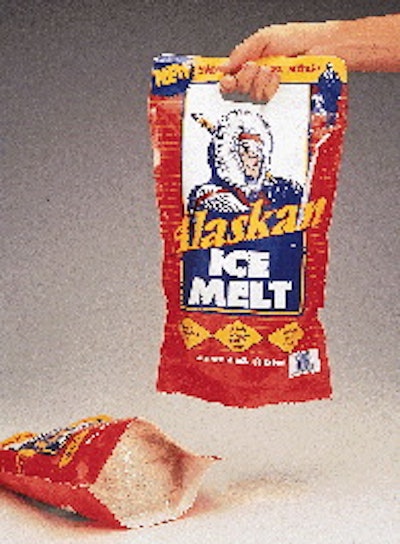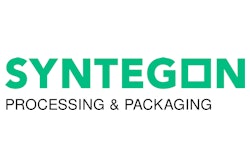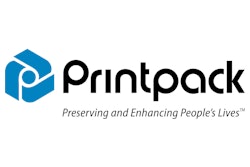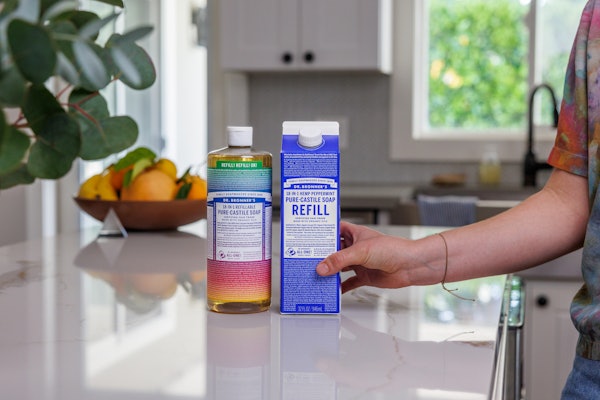
Unlike their food counterparts (see story, p. 76), the three DuPont award-winning products discussed here have little in common. What they do share is package innovation. Schering-Plough's dry powder inhaler (1), winner of a gold award, is a perfectly good example.
Kenilworth, NJ-based Schering-Plough continues to conduct clinical trials for a steroid-based dry powder inhaler. The inhaler has a novel patented design with a counting mechanism which allows the patient to know the number of doses remaining at all times.
Reproducible dosing has been demonstrated with the delivery system that operates over a broad range of inspiratory flow rates. In use, the dose is positioned in an inhalation channel when the cap is removed by what Schering calls cap-activation. Upon inspiration, the drug in the form of free-flowing agglomerates impinges on a specially designed internal nozzle that reproducibly reduces the agglomerates to a fine particle fraction of drug.
Imtiaz Chaudry, Ph.D., vice president, pharmaceutical development, Schering-Plough Research Institute, managed a team that developed the packaging/drug delivery system.
Thomas Ambrosio, Ph.D., development fellow at the Institute, reports, "The container uses a combination of plastics. The polypropylene exterior provides a moisture barrier. The bulk of the interior, including the reservoir, dose plate, support plates and counter rings are acrylonitrile butadiene styrene. The ABS allows for precision molding. Polyester is used for a pawl in the counter mechanism." Schering-Plough Corp. holds the patents for the systems and designs.
Although Packaging World had details about the product, commercialization and names of suppliers involved in the design and assembly of container parts, Schering-Plough asked us not to publish them.
"The person simply breathes in the product and the inhaler precisely meters the proper dose," says Ambrosio. He says the metering system not only emits reproducible doses, but its design makes accidental double dosing virtually impossible. In addition, the patient will always know the number of doses remaining because the inhaler has a numerical counter. The inhaler earned a gold award in the non-food category from DuPont (Wilmington, DE).
Shake and seal bag
Another gold award winner in DuPont's non-food category was the ShakerPAK(TM)(2), a practical and innovative bag used by Sylacauga, AL-based Pursell Industries for its Alaskan(TM) Ice Melt (see PW, March '98, p. 42). Between late '97 and early '98, the company shipped 75ꯠ of these handled, resealable zippered bags that are supplied pre-made by Kapak (Minneapolis, MN).
From the inside-out, the 7.5-mil adhesive lamination includes 6-mil linear low-density polyethylene/1-mil nylon/48-ga polyester. Kapak gravure prints the polyester in four colors. The supplier also applies the resealable zipper across the inside width dimension of the bag, near its bottom. Kapak die-cuts a carry handle into the bag, near its top. At nearly the opposite end of the bag is a 4.5-mil mesh gusset material that's heat-sealed to the inside of the structure during bagmaking.
The mesh material is critical to the bag's functionality as it allows the user to shake the ice melt pellets out of the bag's bottom while gripping the bag handle at the top. The mesh area is exposed after the user opens the bag bottom by cutting the seal. Printed instructions and a small tear notch at each side guide the user. Once the user has shaken out the desired amount of product, the pack is resealed with the zipper.
Graphics at the top of the bag state "New" and "Shake & Seal Bag," and are accompanied by art showing a person shaking ice melt from the bag. Detailed usage instructions are printed on the back side of the bag.
Pursell semi-automatically packs the pre-made bags, using net-weigh bagging equipment from Inglett (Augusta, GA), then seals the bags on a band sealer from Doboy, a div. of SIG Packaging Technologies (New Richmond, WI).
As user-friendly as the bag is, Pursell's Judy Johnson laments that "most retailers were already stockpiled with ice melt product inventories," so initial sales weren't as strong as Pursell had hoped. And last winter's extraordinarily mild weather didn't help, either. But, she says, "We're thrilled with the differentiation the bag gives us. The bag will remain the same this year.
"The bag offers many benefits to users, and we're happy with it," she continues. "We're primarily a company that makes fertilizer products, so we're also considering this bag for some of those items in the future."
Johnson, who purchases packaging for the company, admits that the bag costs about 50¢ more than a previous plastic bag that was used for 10-lb packs of ice melt. Yet despite the upcharge, and the sales uncertainty, she remains optimistic about the bag's future.
Pet food bag/box
Hill's Pet Nutrition garnered a silver award for a flat-bottom bag (3) with unusual pleated side seals that it uses for some 15 SKUs of Hill's Science Diet® dry pet food for both dogs and cats. Bags contain between three and 6.6 lb of product, depending on the variety.
The flat bottom and side seals create a box-like appearance to the bag that's made and filled on a vertical form/fill/seal machine. The polyethylene-based bag structure includes an outer layer of polyester that's reverse-printed flexographically in five colors by Printpack (Atlanta, GA). More specific material and thickness details weren't revealed "for competitive reasons" according to Garry Decker, senior science fellow for packaging for Topeka, KS-based Hill's.
He says Hill's has applied to trademark the name "Flexibox" for the package. To pack the bags, Hill's uses what was a first-of-its-kind machine from UVA-Butler (Richmond, VA) when the product was introduced (see PW, March '98, p. 42). The product was launched in Canada in May '97; two months later it was introduced in the U.S. The pet food is also sold in these bags in Europe and in the Pacific Rim.
Three custom Model XL-460 vertical form/fill/seal machines from UVA-Butler produce the flat, block bottom and four pleated sides. Hill's operates the equipment at its plants in Bowling Green, KY, and Los Angeles, CA. Speeds average 40 bags/min, regardless of size, according to Decker.
Flexibox offers several advantages for Hill's, though the most obvious is "about a forty percent reduction in cost," notes Decker. "Our parent company, Colgate-Palmolive, simply wouldn't have funded this [switch from a multiwall bag] unless there had been a [justifiable] cost savings."
Besides the materials savings, he says Flexibox provides "an overall shelf appearance that's much better than the multiwall paper/plastic bag. It's also better sealed against oxidation from the outside because the multiwall structure wasn't fully closed."
Decker, who served as the technical manager for this project, praises the new pack's ability to withstand distribution rigors. "The Flexibox offers support against crushing, which has been a serious problem with pet food in the past," he says. The weight of products stacked on top of one another sometimes caused the bottom of bags to bulge outward. This package retains its rectangular form." That's especially important today, he says. "At one time, pet food pallets were stacked only two-high, but now it's sometimes four-high." Hill's shrink-wraps six or eight of these bags into a bundle, with about 24 bundles on a pallet.
The product line sells at both retail pet food outlets and at veterinary clinics, says Decker, but not through supermarkets or mass merchandisers. Suggested retail prices range between $6 and $9.
How has the new pack fared? "We're meeting our production commitment, but it's difficult to measure sales," Decker says. Several factors contribute to that. While using the plastic structure is the company's first priority, it still uses some multiwall bags. He says that the complexity of the equipment and the learning curve for machine operators put some limits on Hill's use of the machinery, though he reports, "we're gaining in efficiencies almost every day."




























